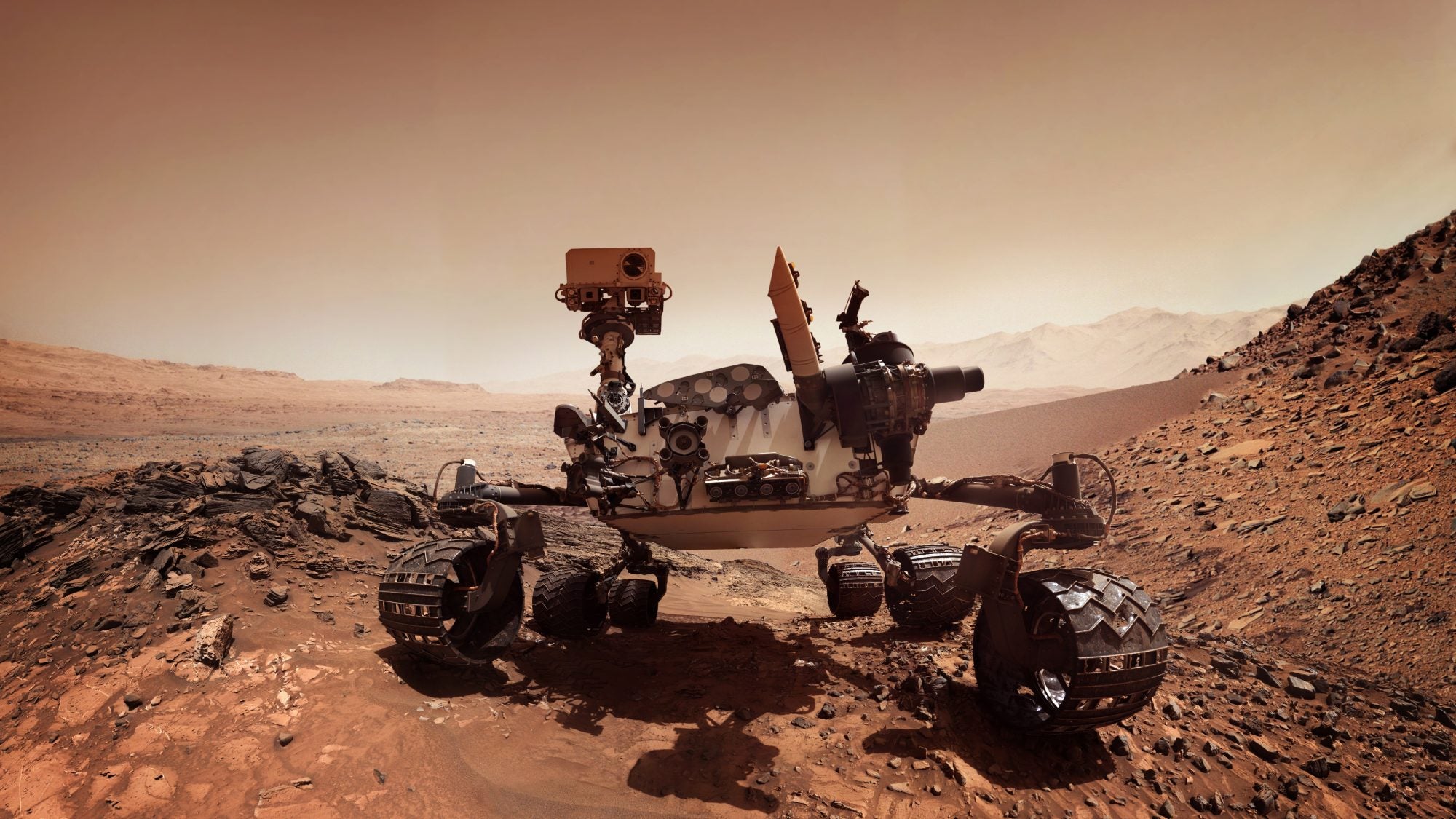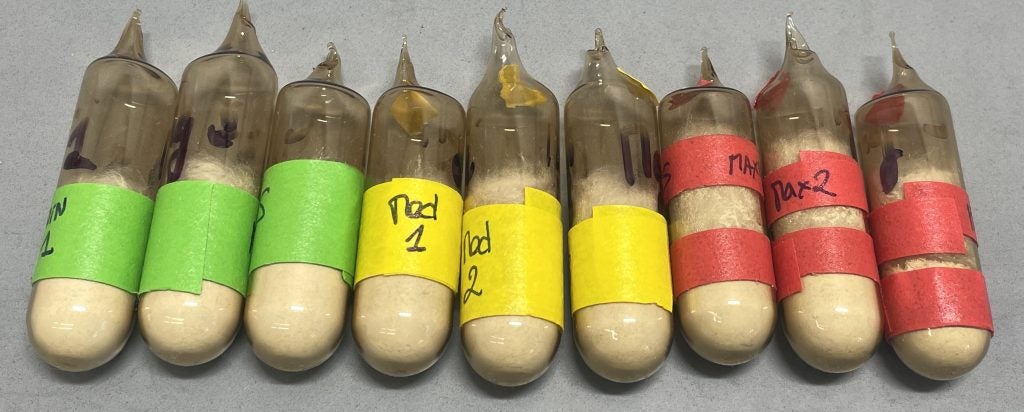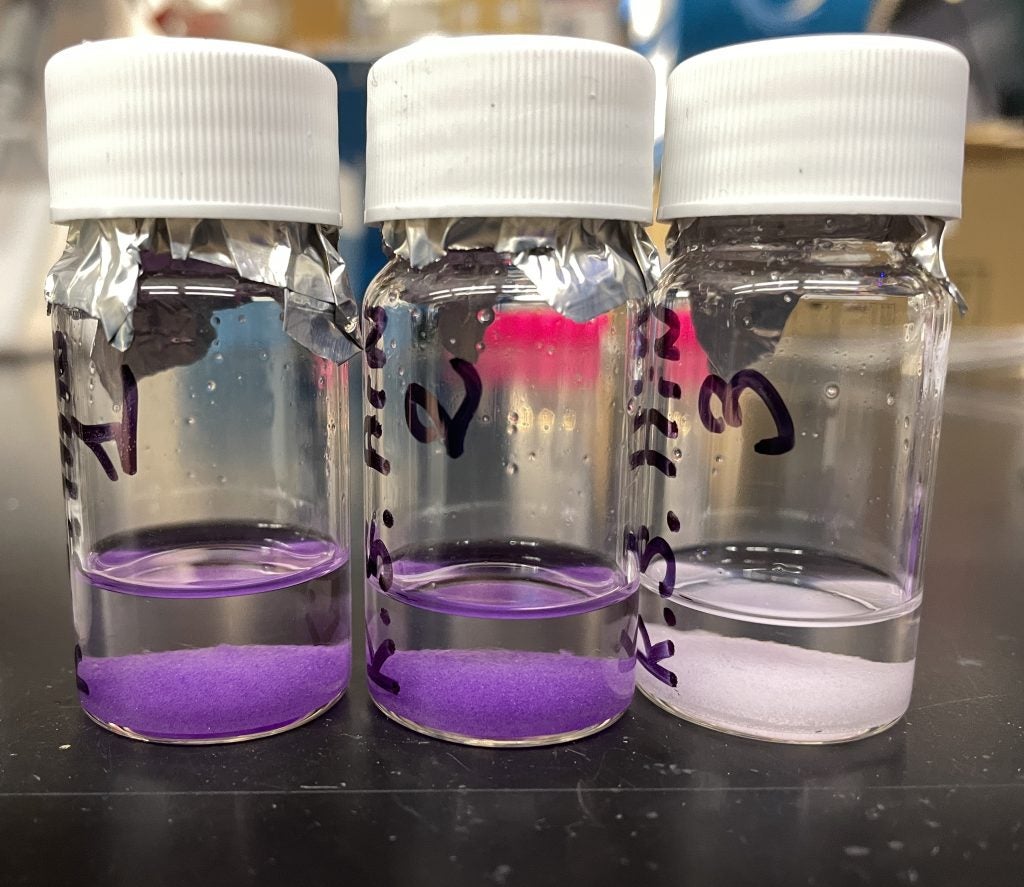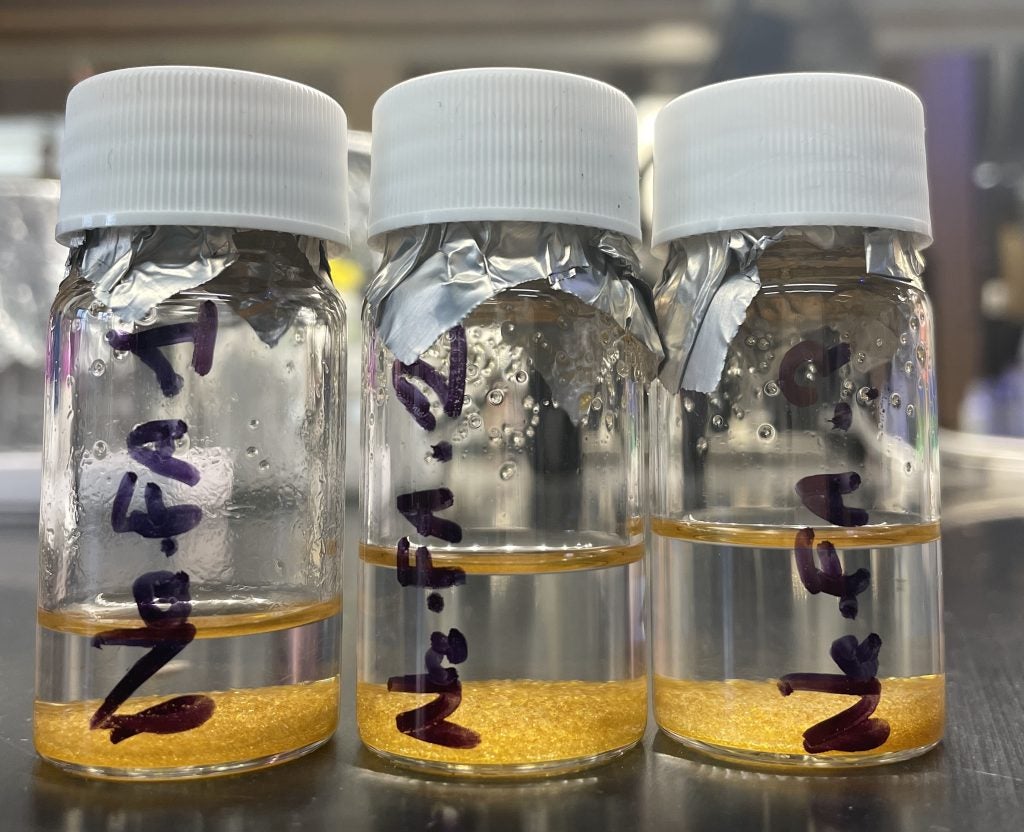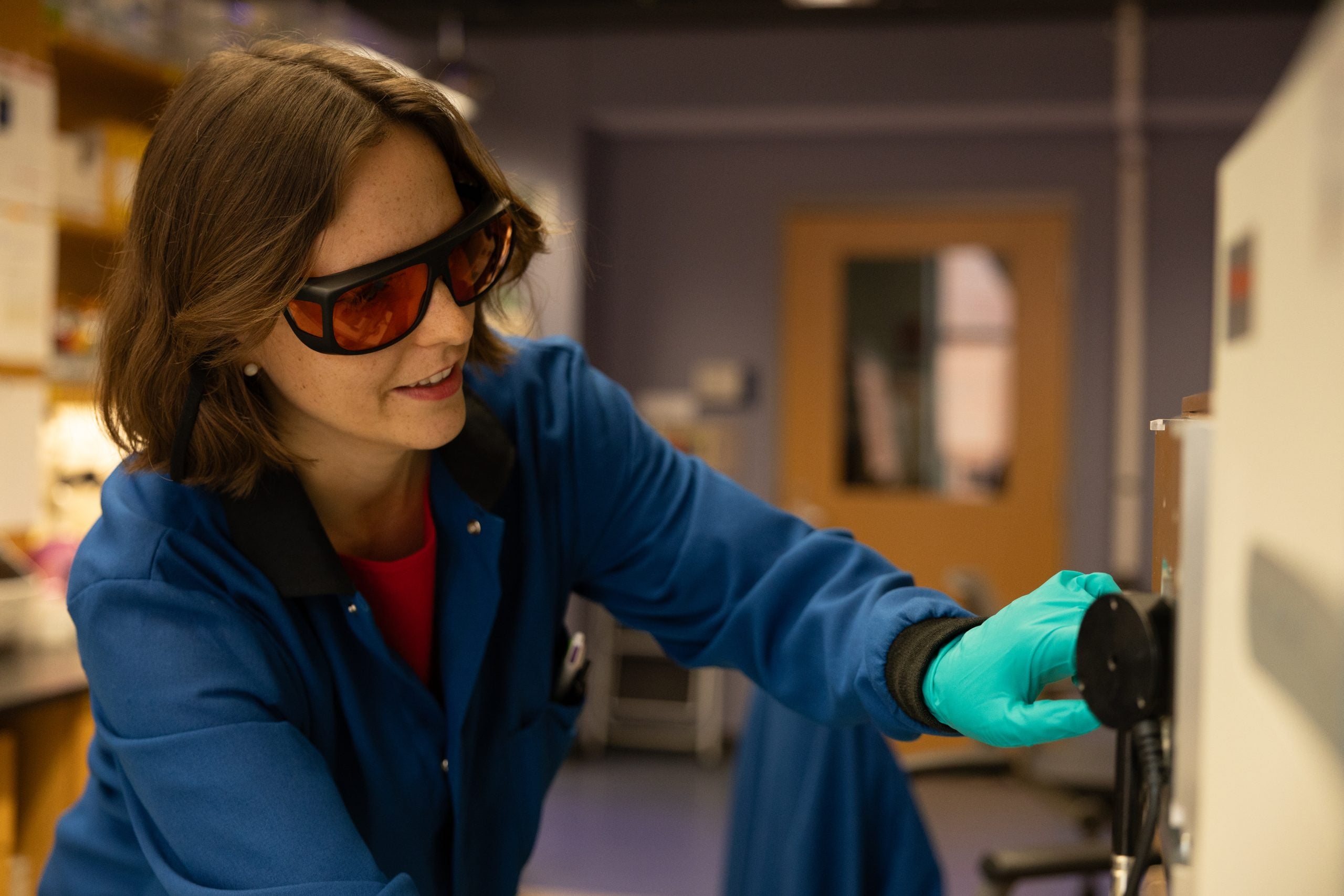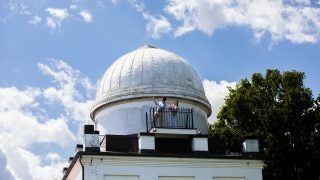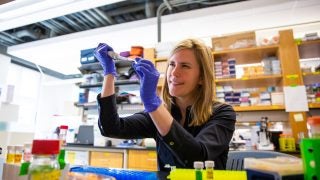The search for life on Mars may have become more complicated because of the radiation from stars millions of light years away.
These are the results of a new study published by Anais Roussel (G’24), a postdoctoral researcher and organic geochemist at Georgetown. Roussel studies how cosmic radiation from supernovae affects biomarkers that could point to the existence of past life on Mars, which is inhospitable to current life due to its freezing temperatures, high levels of radiation and dry climate.

“The big picture in astrobiology is we want to know whether we are alone in the universe,” Roussel said. “If you were looking for current life, you would look for forests or microbes. But in the context of Mars, we’re looking for traces of ancient life because the surface is so harsh right now.”
Roussel’s most recent publication is the third and final of three research papers she published based on her Ph.D. dissertation. Prior to Georgetown, Roussel earned her master’s degree in biotechnological engineering in France and researched biomarker preservation in the Cambrian rocks in Oman as part of a research team from MIT.
Today, Roussel continues her research in the lab of her Ph.D. advisor Professor Sarah Johnson, an astrobiologist in the College of Arts & Sciences and School of Foreign Service as well as a member of NASA’s Curiosity rover team.
“Working with Anais has been a total delight,” Johnson said. “Her pioneering scientific research is transforming how we approach the search for life on Mars.”
For her research, Roussel collaborated with NASA scientists to mimic millions of years of cosmic radiation to determine how quickly radiation would degrade the fossils of complex molecules that are diagnostic of life.
“My big question is can any of these clues survive this radiation?”
Clues of Life on Mars
Scientists believe Mars used to be habitable. Oceans, rivers, canyons, warm temperatures and a thick atmosphere once covered the Red Planet.
Mars is also similar to Earth in many ways. It’s similar in age to Earth at about 4.6 billion years old, has a comparable geological composition and is close in size relative to other planets in the solar system.
But while Mars may have once been Earth’s doppelganger, the likelihood of it sustaining life dwindled when it lost its magnetic field and atmosphere about 4 billion years ago. Without its atmosphere, Mars’ water was mostly blown away or frozen in the polar caps of the planet, Roussel said.
In looking for life beyond Earth, astrobiologists often search for amino acids, one of the building blocks for life.
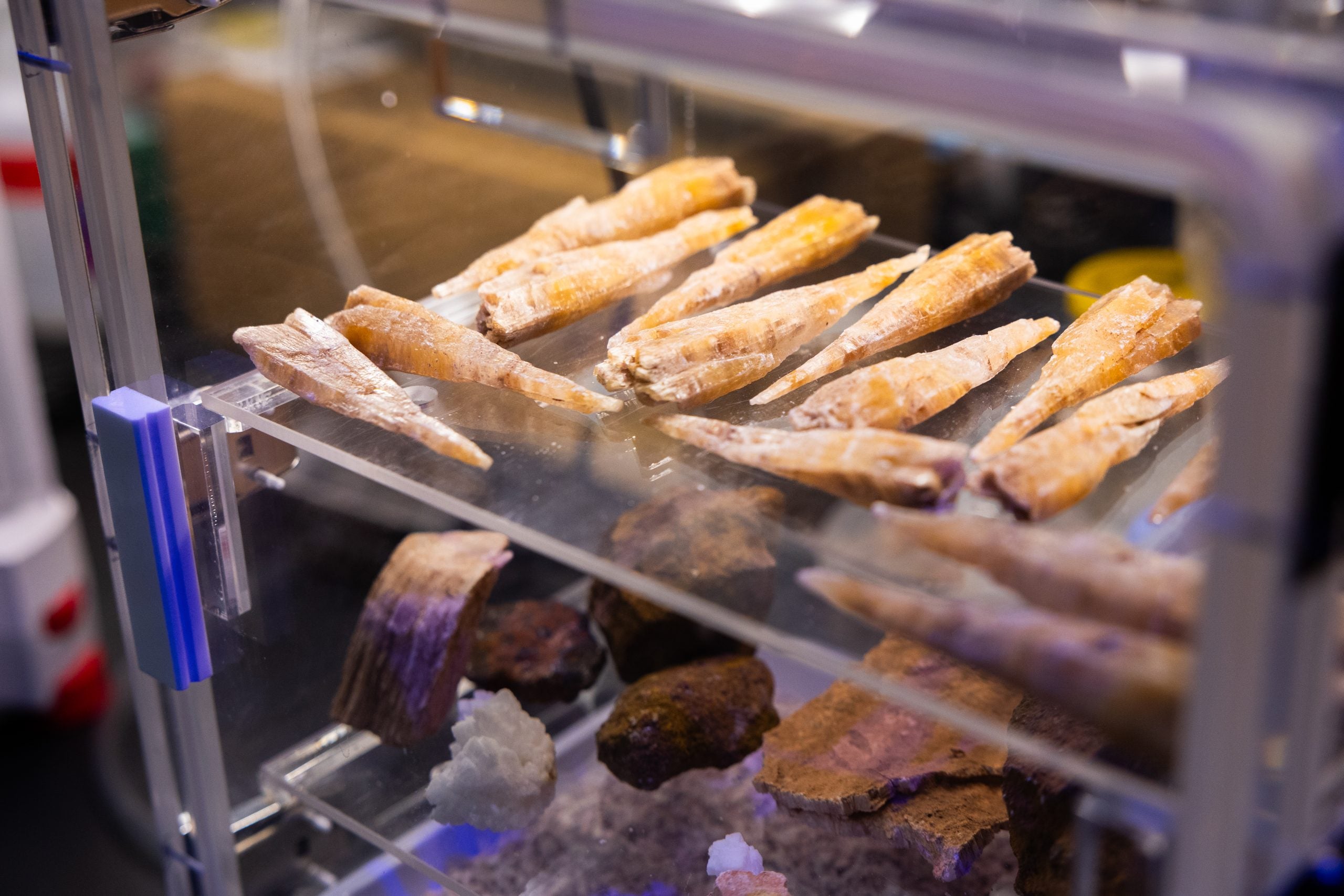
But amino acids alone are not conclusive evidence for life, Roussel said, because they can chemically form independently without life. Scientists have even found amino acids in space particles like meteorites, which they don’t believe have shown any evidence of life.
Instead of amino acids, Roussel studies the fossils of lipid molecules found in cell membranes.
“[They’re] very teeny tiny clues,” she said.
Specifically, she looks at hopanes and steranes. These molecules are different from amino acids because they’re highly complex molecules that can’t exist without life.
“Hopanes and steranes are one of the strongest biosignatures on Earth. They’re the oldest ones we can find, and they’re super resistant over geological timescales of billions of years,” she said. “I basically picked the strongest biosignature on Earth that’s diagnostic of life, and I asked the question, ‘What if we now add Martian radiation on top of it?’”
The Biological Effects of Cosmic Radiation
Complicating the search for biomarkers on Mars are cosmic rays from the sun and outside the solar system.
Even though the sun is only 1.5 astronomical units from Mars — a stone’s throw in space terms at about 228 million kilometers — radiation from the sun pales compared to cosmic rays from supernovae light years away from the solar system.
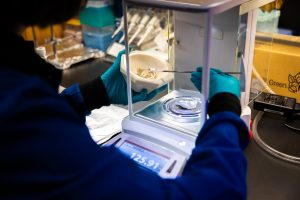
“When an old star explodes, it sends a huge amount of particles that are extremely rich in energy. Those sources are more distant, but they’re much more energetic, so they’re going to penetrate through the surface,” Roussel said.
Earth’s atmosphere and magnetic field protects the planet from solar and extrasolar radiation. But without a magnetic field and thin atmosphere, Mars’ surface has accumulated radiation for the last 4 billion years — a fraction of which could kill any living organism on Earth, Roussel said.
Roussel worked closely with NASA’s Goddard Space Flight Center in Maryland to simulate this cosmic radiation in the lab.
In her study, Roussel irradiated hopanes and steranes in rock samples with the equivalent of 15 million years of cosmic radiation. The results were not promising for the hopes of finding the complex molecules near the surface of Mars: After the radiation, only 20 percent of the steranes and between 50 and 60 percent of the hopanes remained.
In other words, after 4 billion years of radiation on Mars, the chances of finding definitive chemical signs of life, at least at the surface, may be minuscule.
Salt: A Double-Edged Sword to Preserve Life?
Like many astrobiologists, Roussel studies salty environments because of salt’s properties that are conducive to life.
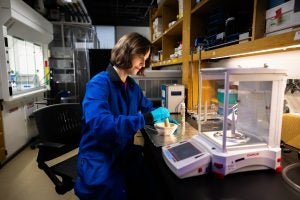
Saltwater freezes at lower temperatures, allowing life that depends on liquid water to survive in what would otherwise be frozen temperatures.
“On Mars, it’s extremely cold, and we don’t have surface liquid because of that. It’s either gone or frozen,” Roussel said. “But if you have salt, you can have at least tiny pockets of liquid water [in lower temperatures], and liquid water is encouraging because it’s an environment that implies higher chances of finding life.
Salt also helps preserve signs of life. On Earth, scientists have studied how dried-up salt lakes have perfectly preserved life forms for millions of years, Roussel said. If Mars ever had life, searching in salt-rich environments on the Red Planet would be a good place to start.
The problem?
Salty environments and cosmic rays are a poor combination to preserve life.
